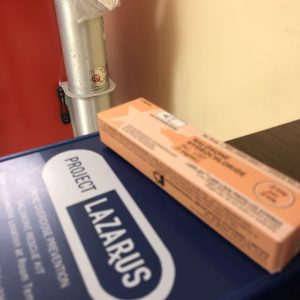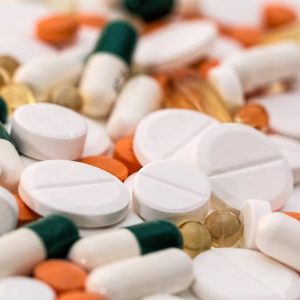Want to experience the greatest in board studying? Check out our interactive question bank podcast- the FIRST of its kind here: emrapidbombs.supercast.com
Author: Jacob Robinson, OMS IV
Peer editors: Travis Smith, DO, Blake Briggs, MD, Mary Claire O’Brien, MD
Introduction
Iron is a heavy metal that is vital to many human biological processes. However, just like all good things and vitamins, it can be toxic and deadly when taken in excess.1,2 This most often occurs in young children who accidentally or intentionally ingest supplements.1 In children <6 years old, 11,000 iron exposures are reported annually in the US alone.3
It is reported that about 30% of deaths from toxins resulted from products that contain iron between 1980 to the 1990s. Fatalities have dropped since 1996 due to improved awareness about the dangers. Exposure to iron has also declined from 2002 to 2008 (33,004 and 28,876, respectively).4 This review will cover the pathophysiology, presentation, diagnosis, and management of acute iron toxicity.
Pathophysiology
Humans normally get iron from a wide variety of things in their diet. It is ingested either in the ferric (Fe3+) or ferrous form (Fe2+). The ferrous form is absorbable, mostly in the duodenum and proximal jejunum.1 If iron stores within the body are saturated, hepcidin will be produced, which decreases the absorption of iron.2
Humans usually ingest about 15-40 mg of elemental iron per day.1 It is essential to differentiate between elemental iron and the total amount of iron within a supplement. Elemental iron is the form that results in toxicity. The amount of elemental iron in each preparation varies depending on the salt form: ferrous gluconate (12% elemental iron); ferrous sulfate (20% elemental iron); ferrous fumarate (33% elemental iron).5
Children are most likely to ingest ferrous sulfate, which has 65 mg elemental iron contained in a 325 mg iron supplement.6 The ferrous sulfate tablets look like candy; they are brightly colored and sugar coated.7 Any doses of elemental iron higher than 20 mg/kg are potentially toxic. Moderate symptoms occur up to an ingested amount of 60 mg/kg. Ingesting more than this results in severe symptoms.4
The main mechanism of iron’s toxicity is free radical production caused by excessive free elemental iron, resulting in widespread damage on a cellular level. At normal levels, elemental iron does not cause toxicity because it is always bound to proteins within the body, such as transferrin and ferritin.1
Presentation
Iron poisoning is divided into five clinical stages.1,4 Patients typically present in the earlier stages, and the progression through the stages may occur rapidly in cases of large ingestion. Importantly, the patient’s clinical stage should be based on their symptomatology and not time since ingestion!
Accelerate your learning with our EM Question Bank Podcast
- Rapid learning
- Interactive questions and answers
- new episodes every week
- Become a valuable supporter
Stage 1: occurs about <6 hours post-ingestion. The mucosa of the GI tract is the main target at this point. The patient may have vomiting, diarrhea, nausea, abdominal pain, hematemesis, and hematochezia.1 Patients can have a high anion gap metabolic acidosis or early hypovolemic shock (the most common cause of death in this stage) secondary to capillary leak, third spacing, and volume loss from vomiting/diarrhea.1 Importantly, patients with mild or moderate toxicity do not typically progress to the other stages, and symptoms may resolve in 6 hours’ time.
A patient with possible iron ingestion who remains asymptomatic for 6 hours of observation has a LOW chance of toxicity.
Stage 2: Occurring 12-24 hours after initial ingestion, this stage is characterized by improvement of GI symptoms and a “latent” period. Symptoms seem to improve. Metabolic acidosis may also be present. This stage does not always occur in patients with severe poisoning.1,4
Stage 3: occurs 24-48 hours post-ingestion and is responsible for most patient deaths. GI symptoms make a reappearance, resulting in a worsening metabolic acidosis and shock. Different types of shock have been reported, ranging from hypovolemic to distributive, even cardiogenic. The cardiogenic shock is a direct result of iron toxicity on myocardial cells.1 Coagulopathy can also occur due to elemental iron inhibiting thrombin and other steps of the coagulation pathway.4 The metabolic acidosis is intense, and may be worsened by GI hemorrhage, ARDS from free radical production, and coagulopathy exacerbating bleeding.
Key physical exam findings: tachypnea due to metabolic acidosis and potentially ARDS, tachycardia, abdominal tenderness +/- vomiting, lethargy/coma.
Stage 4: >48 hours after ingestion, this stage is characterized by hepatic damage due to the iron entering the portal tract and traveling to hepatocytes. It is not present in all cases, but it is the 2nd most common cause of death in acute iron poisoning.1,4 Serum iron levels must reach about 1000 micrograms/dL for hepatotoxicity to occur.4
Stage 5: Develops about 2-4 weeks in some survivors of the initial acute phases. Bowel obstruction results from the formation of strictures in the GI tract causing a patient to begin vomiting.1 The gastric outlet is the most likely place for a stricture to form.4
Diagnosis
Making the diagnosis requires a good history and physical exam due to iron poisoning potentially resembling other illnesses, such as viral gastroenteritis.1 The physician must ask EMS and family members about the presence of multivitamins and supplements within the home. If a child’s guardian is present, it is essential to ask whether the child could have obtained their supplements and if they are placed out of reach. A telephone survey showed that only 1/3 of guardians kept iron supplements in places unreachable by children.4
As usual, a general toxicologic workup should occur in the ED, which includes asking EMS or family members about other home medications, as well as other prescription medications found in the household.
Make sure to ask the following: Specific agent, the amount ingested, time of ingestion, any co-ingestions.
Law enforcement might have to be utilized to go to the patient’s place of residence to acquire the medication bottles if the patient is incapacitated or not being forthright. Calling the patient’s pharmacy or any helpful EMR retrieving tricks can pay dividends.
Common toxicologic tests to grab include salicylate and acetaminophen level, CBC, CMP, pregnancy test.
A serum iron level should be sent if iron poisoning is suspected because it can help make a definitive diagnosis and can help guide management. The serum iron level will reach its maximum 4-6 hours after ingestion (8 hours if extended-release tablets). Levels must be drawn at the appropriate time to ensure proper measurement and interpretation. Levels 350-500 mcg/dL usually only experience mild to moderate GI symptoms. Levels >500 have severe toxicity. Patients with levels >1000 have the highest risk of death.1
An abdominal x-ray can show the radio-opaque tablets in some cases. Their presence suggests iron ingestion and can guide further management. However, the lack of signs on x-ray does not eliminate the diagnosis of iron poisoning.4 An abdominal x-ray is indicated in certain circumstances, but our opinion is you should get it regardless. It is a cheap, rapid test that can occur at bedside and provides a lot of potentially useful information. If a liquid form of iron was ingested, it will not be visualized on x-ray.8
Management
As with all toxicologic cases, ABCs are the priority. Many patients will be volume-depleted and severely acidotic, and many require intubation combined with aggressive volume resuscitation. A bolus of IV fluids like our favorite lactated Ringers (LR) of 20 ml/kg should be given first, followed by more fluids if necessary.1 Serial EKGs can be performed to check for arrhythmias or for evidence of myocardial ischemia in the setting of cardiogenic shock.
Serial metabolic panels, liver function tests, and coagulation panels may also be performed to look for electrolyte disturbances, hepatocyte damage, and for any coagulopathies. Aggressive correction is indicated.1
Activated charcoal cannot be used for acute iron poisoning because it does not absorb iron.
Gastric lavage is only indicated if tablets are visualized on x-ray. RSI is indicated prior to lavage. If performed, a repeat x-ray should be done to see if all tablets have been retrieved. Whole bowel irrigation may be done if gastric lavage did not clear all tablets initially, but this should be discussed with Poison Control.1
Deferoxamine
Chelation therapy with IV-infused deferoxamine can also be used in patients with severe symptoms. Consultation with a toxicologist is recommended. Indications for iron chelation therapy include severe symptoms (lethargy, vomiting/diarrhea, anion gap metabolic acidosis, shock/hypovolemia), pills visualized on abdominal x-ray, or a serum iron level >500 mcg/dL.
The mechanism of action of deferoxamine is the binding of ferric iron to make ferrioxamine. Ferrioxamine is eliminated in the urine. While being eliminated, the urine will be an orange color known as ‘vin-rosé’.1 Dosage is from 15 mg/kg/hr up to 35 mg/kg/hr. Continuous IV infusion should be used due to the short half-life of the medication.1
The patient should be closely monitored for side effects like hypotension and irritation of the skin at the infusion site irritation and redness.4,9
Clinical trials have not demonstrated the best time to stop chelation therapy. Recommendations generally state to continue chelation therapy until symptoms subside. This is not a decision you will make as an emergency physician, as all these patients will be admitted to ICU.4
Patients who intentionally overdosed should receive psychiatric evaluation when appropriate and should receive a risk assessment of further suicide attempts before discharge, once they are medically cleared.6
References
1. Madiwale, T., & Liebelt, E. (2006). Iron: Not a benign therapeutic drug. Current Opinion in Pediatrics, 18(2), 174–179. https://doi.org/10.1097/01.mop.0000193275.62366.98
2. Waldvogel-Abramowski, S., Waeber, G., Gassner, C., Buser, A., Frey, B. M., Favrat, B., & Tissot, J. D. (2014). Physiology of iron metabolism. Transfusion medicine and hemotherapy : offizielles Organ der Deutschen Gesellschaft fur Transfusionsmedizin und Immunhamatologie, 41(3), 213–221. https://doi.org/10.1159/000362888
3. Gummin DD, Mowry JB, Beuhler MC, et al. (2019). Annual Report of the American Association of Poison Control Centers’ National Poison Data System (NPDS): 37th Annual Report. Clin Toxicol (Phila) 2020; 58:1360.
4. Chang, T. P.-Y., & Rangan, C. (2011). Iron poisoning. Pediatric Emergency Care, 27(10), 978–985. https://doi.org/10.1097/pec.0b013e3182302604
5. Mills, K. C., & Curry, S. C. (1994). Acute iron poisoning. Emergency medicine clinics of North America, 12(2), 397–413.
6. Yuen HW, Becker W. (2021) Iron Toxicity. [Updated 2021 Jun 30]. In: StatPearls. Treasure Island (FL): StatPearls Publishing; 2021 Jan. https://www.ncbi.nlm.nih.gov/books/NBK459224/
7. Morris C. C. (2000). Pediatric iron poisonings in the United States. Southern medical journal, 93(4), 352–358.
8. The Royal Children’s Hospital Melbourne. (n.d.). https://www.rch.org.au/clinicalguide/guideline_index/Iron_poisoning/.
9. Poggiali, E., Cassinerio, E., Zanaboni, L., & Cappellini, M. D. (2012). An update on iron chelation therapy. Blood transfusion = Trasfusione del sangue, 10(4), 411–422. https://doi.org/10.2450/2012.0008-12



